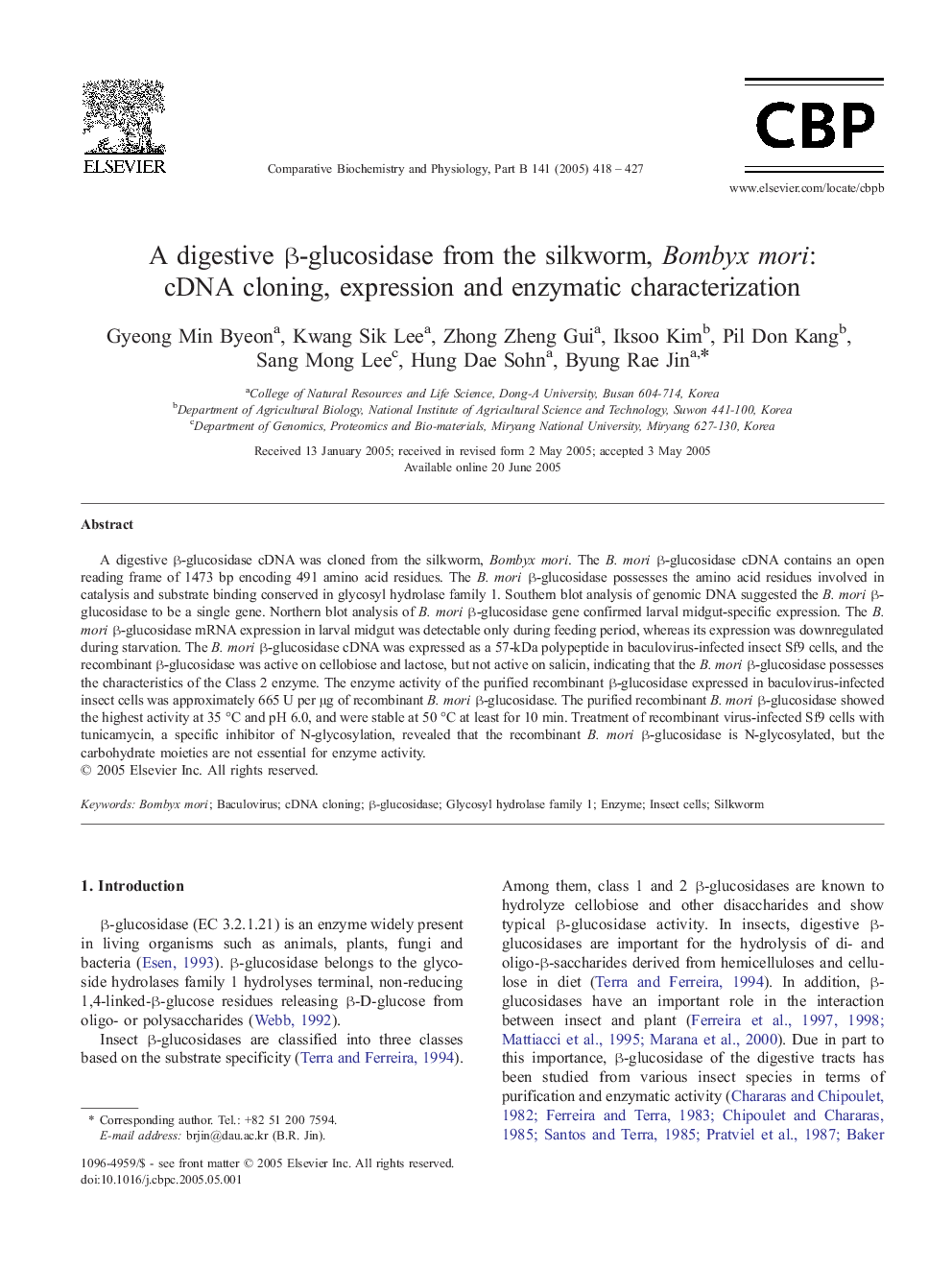| Article ID | Journal | Published Year | Pages | File Type |
|---|---|---|---|---|
| 10820476 | Comparative Biochemistry and Physiology Part B: Biochemistry and Molecular Biology | 2005 | 10 Pages |
Abstract
A digestive β-glucosidase cDNA was cloned from the silkworm, Bombyx mori. The B. mori β-glucosidase cDNA contains an open reading frame of 1473 bp encoding 491 amino acid residues. The B. mori β-glucosidase possesses the amino acid residues involved in catalysis and substrate binding conserved in glycosyl hydrolase family 1. Southern blot analysis of genomic DNA suggested the B. mori β-glucosidase to be a single gene. Northern blot analysis of B. mori β-glucosidase gene confirmed larval midgut-specific expression. The B. mori β-glucosidase mRNA expression in larval midgut was detectable only during feeding period, whereas its expression was downregulated during starvation. The B. mori β-glucosidase cDNA was expressed as a 57-kDa polypeptide in baculovirus-infected insect Sf9 cells, and the recombinant β-glucosidase was active on cellobiose and lactose, but not active on salicin, indicating that the B. mori β-glucosidase possesses the characteristics of the Class 2 enzyme. The enzyme activity of the purified recombinant β-glucosidase expressed in baculovirus-infected insect cells was approximately 665 U per μg of recombinant B. mori β-glucosidase. The purified recombinant B. mori β-glucosidase showed the highest activity at 35 °C and pH 6.0, and were stable at 50 °C at least for 10 min. Treatment of recombinant virus-infected Sf9 cells with tunicamycin, a specific inhibitor of N-glycosylation, revealed that the recombinant B. mori β-glucosidase is N-glycosylated, but the carbohydrate moieties are not essential for enzyme activity.
Related Topics
Life Sciences
Biochemistry, Genetics and Molecular Biology
Biochemistry
Authors
Gyeong Min Byeon, Kwang Sik Lee, Zhong Zheng Gui, Iksoo Kim, Pil Don Kang, Sang Mong Lee, Hung Dae Sohn, Byung Rae Jin,
